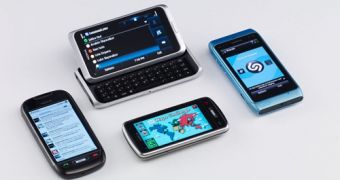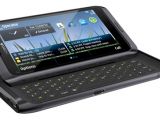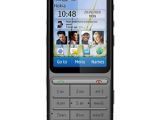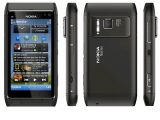Finnish mobile phone maker Nokia has been through some pretty tough months lately, with the launch of the new Symbian^3 OS, followed by the loss of its CEO and of other top executives, but it seems that the company is quite optimistic about the future.
Still the largest phone maker in the world, Nokia has been losing market share to competitors, and the same applies to the Symbian operating system that it is committed to.
While many voices suggest that Symbian is a sinking ship, and that Nokia might be dragged to the bottom along with it, the company suggests that it is actually better positioned than some of its competitors.
“I think there is probably a good Nokia phone model for basically everybody on the planet,” Tarja Kantola, Senior GTM Manager, Eseries, Nokia, told Softpedia last week during the Microsoft TechEd Europe 2010 conference in Berlin.
“We have handsets at different price points, not as other companies, which have a small number of devices, priced very high,” Dinesh Subramaniam, Senior Manager, Communications, added.
In a mobile market where smartphones are taking the lead, Nokia is set to focus more on what the end user wants, while aiming at a broad range of consumers.
At the end of the day, it's not only the business man who needs a handset, be it a smartphone or not, but others as well, and Nokia aims at offering as many people as possible a way in which to connect to people, work and other important things in their lives.
“Smartphones are not only for office people. They allow users to connect to their email, business accounts, and to connect to a wide range of applications on their devices,” Tarja Kantola notes.
There are Nokia smartphones with enhanced Internet and/or multimedia features, but there are also some devices for those who are looking for more affordable solutions.
Price points and features matter
The S40 series is the place to look at when it comes to affordability, she continues, adding that these devices have been packed with enhanced features too, and that they can offer great experiences to users in certain categories.
However, these are not the only Nokia handsets that offer improved capabilities at lower price tags, as the company is set to make the smartphones much cheaper than before, so that more users would have access to this market segment.
“Today, the price points are more appealing when it comes to smartphones. And they are more appealing when it comes to Nokia smartphones,” she continued.
Going forward, we should expect all kinds of mobile phones from Nokia on the long term, including high-end, appealing smartphones like Nokia N8 or E7, as well as more affordable, though durable and reliable devices.
According to Dinesh Subramaniam, Nokia will bring to shelves different devices in different shapes, with various features enabled, so we should be looking out for touchscreen-only handsets, as well as for some with touch and QWERTY keyboards, or for phones with no touch capabilities at all.
These devices (both smartphones and feature phones) should offer users a series of features, such as the possibility to access the services or the applications they need, including email and more.
Better hardware, better software
Regardless of shape or features, phones should offer reliability: “Nokia is praised for its hardware around the world. We're set to continue this tradition of bringing more devices that have great hardware,” Subramaniam continued.
“With the new Symbian OS, things are getting better on the software side as well,” he added.
It's a common fact that Nokia has already committed to the Symbian platform, despite all the problems the mobile OS might have had lately.
Moreover, it appears that the recent changes with the Symbian Foundation might prove beneficial for Nokia and Symbian, as the company would be able to invest its own resources in the mobile OS.
After all, Nokia says that it does not need the Foundation to run the Symbian platform, and that it will continue to support the OS and to invest in its development.
Emerging markets are equally important
However, the company does not plan on focusing only on the smartphone market, but it is also interested in driving innovation in the services that are offered to emerging markets, as not all people there can afford a smartphone.
“A lot of focus today is on smartphone, but people ignore emerging markets, such as India, China, Africa, where the price point is important,” Subramaniam said.
People in these countries need access to information but can not afford to spend too much on a mobile phone or on the services that come with the device.
“They think a little more before purchasing a phone. They are more interested in a phone with services, and this is where Ovi Life Tools comes in,” he notes.
Moreover, given the lower price tags some devices come with, phones are often the means through which people connect to the Internet for the first time.
Thus, Nokia is set to make available for them different handsets, in different form factors, but with the needed services included, and with the necessary applications.
Of course, Nokia is not aiming only at emerging markets with the services and applications it has in store for its users.
The mobile phone maker already announced enhanced support for developers willing to come up with applications for its platforms (they can use the Qt framework as the only development platform to target more than just one OS).
2.7 million/day app downloads in the Ovi Store
“Our reach to developers has changed drastically over the last year. The Ovi Store has seen upgrades, the experience it offers changed too, both when it comes to end users and developers,” Subramaniam noted.
The company reports a number of 2.7 million downloads per day from the Ovi Store, while adding that the total number of downloads on Nokia devices should be higher, as apps and content can be found via other channels as well.
Developers have and will continue to have the possibility to choose whether their apps will be available via the Ovi Store or through other channels, or both.
For the future, the handset vendor plans on tightening its collaboration with developers and companies for the delivery of new, appealing content to users.
And since the discussion took place at Microsoft's conference, Nokia also unveiled that the two companies will continue their existing collaboration, and that Nokia users will still have access to software solutions from the Redmond-based giant.
Nokia and Microsoft will work together so that handset users will receive the latest updates from Microsoft as soon as the company makes the solutions available for the market.

 14 DAY TRIAL //
14 DAY TRIAL // 




